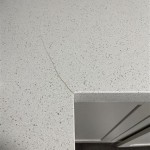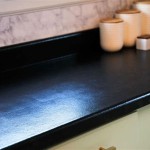Natural Stone Tile Kitchen Countertops: A Comprehensive Guide
The kitchen countertop is a crucial element in any kitchen design, serving as a workspace, a focal point, and a reflection of the homeowner's aesthetic preferences. Natural stone tile offers a versatile and appealing option for kitchen countertops, combining durability, beauty, and a unique character that is difficult to replicate with synthetic materials. This article explores the various aspects of natural stone tile countertops, including the types of stone available, their benefits and drawbacks, installation considerations, and maintenance requirements, providing a comprehensive guide for those considering this countertop option.
Types of Natural Stone Used for Tile Countertops
The term "natural stone" encompasses a wide range of materials, each with its own distinct characteristics in terms of color, pattern, hardness, porosity, and cost. Some of the most popular natural stones used for tile kitchen countertops include granite, marble, slate, limestone, and travertine. Understanding the properties of each stone is paramount in selecting the most appropriate material for a specific kitchen environment and lifestyle.
Granite: Granite is an igneous rock formed from cooled magma. It is known for its exceptional hardness and durability, making it highly resistant to scratches, heat, and stains. Granite tiles offer a wide variety of colors and patterns, from speckled and granular to swirled and veined. Its low porosity, when properly sealed, makes it a suitable choice for high-traffic kitchens. The cost of granite tiles can vary depending on the rarity and quality of the stone.
Marble: Marble is a metamorphic rock formed from limestone or dolostone. It is prized for its elegant appearance and distinctive veining patterns. Marble countertops exude a sense of luxury and sophistication. However, marble is more porous and softer than granite, making it more susceptible to staining and scratching. While proper sealing can help mitigate these issues, marble requires more diligent maintenance and care, particularly in a kitchen environment where spills and acidic substances are common. Common marble tile types include Carrara, Calacatta, and Statuario, each with varying degrees of whiteness and veining.
Slate: Slate is a fine-grained metamorphic rock derived from shale. It is known for its durability, water resistance, and unique textured surface. Slate tiles offer a rustic and earthy aesthetic, often featuring variations in color and texture that add visual interest. Slate is relatively non-porous and easy to clean, making it a practical choice for kitchen countertops. It is also heat resistant and relatively resistant to staining and scratching. The darker hues of slate can effectively conceal minor imperfections.
Limestone: Limestone is a sedimentary rock composed primarily of calcium carbonate. It has a natural, earthy appearance and can range in color from light beige to dark gray. Limestone tiles are less hard and more porous than granite or slate, making them more susceptible to staining and scratching. They require regular sealing to protect against moisture and spills. Limestone countertops often develop a patina over time, which some homeowners find desirable, adding to their character. However, others may prefer a more pristine surface, requiring more frequent maintenance.
Travertine: Travertine is a type of limestone formed near mineral spring deposits. It is characterized by its porous surface and natural pits and holes. Travertine tiles often have a warm, creamy color and a distinctive textured appearance. Like limestone, travertine is relatively soft and porous and requires sealing to prevent staining and damage. The naturally occurring holes in travertine can be filled during the manufacturing process to create a smoother surface. However, some homeowners prefer to leave the holes unfilled for a more rustic look. Regular cleaning and maintenance are essential to keep travertine countertops looking their best.
Advantages and Disadvantages of Natural Stone Tile Countertops
Natural stone tile countertops offer a unique blend of advantages and disadvantages compared to other countertop materials such as solid surface, quartz, or laminates. Understanding these pros and cons is essential in making an informed decision.
Advantages:
Aesthetic Appeal: Natural stone tiles offer a beauty and character that is difficult to replicate with synthetic materials. Each tile is unique, with variations in color, pattern, and texture that add visual interest and depth to the kitchen. The wide range of stone types available allows homeowners to choose a material that complements their overall kitchen design aesthetic.
Durability: Certain natural stones, such as granite and slate, are exceptionally durable and resistant to scratches, heat, and stains. When properly sealed and maintained, these materials can withstand the rigors of daily kitchen use.
Heat Resistance: Natural stone tiles are generally heat resistant, making them suitable for use near cooktops and ovens. Hot pots and pans can be placed directly on the countertop without causing damage.
Repairability: While tiles can be susceptible to chipping or cracking, individual tiles can often be replaced without having to replace the entire countertop.
Cost-Effectiveness: Tile countertops can be more cost-effective than full slab countertops, especially when using readily available stone types. The cost savings can be significant, particularly in larger kitchens.
Disadvantages:
Grout Lines: Grout lines are inherent to tile countertops and can be a source of concern for some homeowners. Grout can be difficult to keep clean and can harbor bacteria and stains. Regular cleaning and sealing are essential to maintain the appearance and hygiene of grout lines. Epoxy grout is a more stain-resistant option compared to cement-based grout.
Porosity: Some natural stones, such as marble, limestone, and travertine, are relatively porous and susceptible to staining and damage from acidic substances. Regular sealing is essential to protect these materials from moisture and spills.
Chipping and Cracking: While durable, natural stone tiles can be chipped or cracked if subjected to impact or heavy weight. Care should be taken to avoid dropping heavy objects on the countertop.
Uneven Surface: Natural stone tiles can sometimes have slight variations in thickness, which can result in an uneven countertop surface. Proper installation techniques are necessary to minimize these variations and create a level surface.
Maintenance: Natural stone countertops require regular maintenance, including cleaning, sealing, and polishing, to keep them looking their best. The frequency of maintenance depends on the type of stone and the level of use.
Installation and Maintenance Considerations
Proper installation and maintenance are crucial to ensuring the longevity and performance of natural stone tile countertops. The installation process involves several steps, from preparing the substrate to setting the tiles and applying grout and sealant. Maintenance includes regular cleaning, sealing, and polishing to protect the stone from damage and maintain its appearance.
Installation:
The substrate must be level, stable, and free of any debris. A cement backer board is typically used as a substrate for tile countertops, providing a solid and moisture-resistant surface. The tiles are then laid out according to a pre-determined pattern and adhered to the substrate using a thin-set mortar. Spacers are used to ensure consistent grout lines. After the mortar has cured, the grout is applied to fill the spaces between the tiles. Excess grout is removed, and the grout lines are cleaned and sealed. Finally, a sealant is applied to the stone surface to protect it from moisture and stains. Professional installation is highly recommended to ensure a proper and durable installation.
Maintenance:
Regular cleaning is essential to remove dirt, spills, and food particles. A mild detergent and warm water are typically sufficient for cleaning natural stone countertops. Avoid using abrasive cleaners or scouring pads, as these can scratch the stone surface. Spills should be wiped up immediately to prevent staining, especially on porous stones like marble and limestone. Sealing helps protect the stone from moisture and stains. The frequency of sealing depends on the type of stone and the level of use. Marble and limestone typically require sealing more frequently than granite or slate. A quality stone sealant should be applied according to the manufacturer's instructions. Polishing can help restore the shine and luster of natural stone countertops. A stone polish can be applied periodically to maintain the appearance of the stone.
The decision to use natural stone tile for kitchen countertops requires careful consideration of the many factors discussed above. By weighing the advantages and disadvantages of each stone type, understanding the installation process, and committing to regular maintenance, homeowners can create a beautiful and functional kitchen space that will provide years of enjoyment.

All About Natural Stone Countertops

Kitchen Countertops With Natural Stone

Natural Stone Kashmir White Granite For Countertops Tiles Kitchen Countertop Bathroom Vanity Top Floor Tile Slab Made In China Com

The Benefits Of A Natural Stone Kitchen Countertop Amanzi Marble Granite

Natural Stone Kitchen Backsplash Backsplashes Connecticut

15 Favorite Kitchen Countertop Materials Marble Com

4 Types Of Stone That You Should Consider For Your Countertops Ceramic Matrix Floridas Natural And Porcelain Tile Distributor

How To Meld Natural Stone With Engineered Seamlessly

Tips For Choosing The Best Countertops Your Kitchen Remodeling Natural Stone

Stylish Stone Kitchen Countertops For Your Remodeled Home Willis Tx








